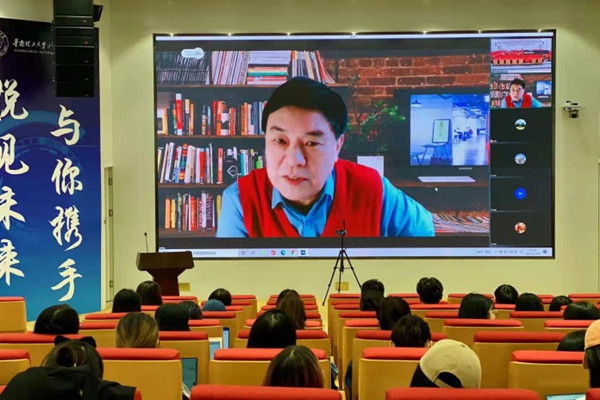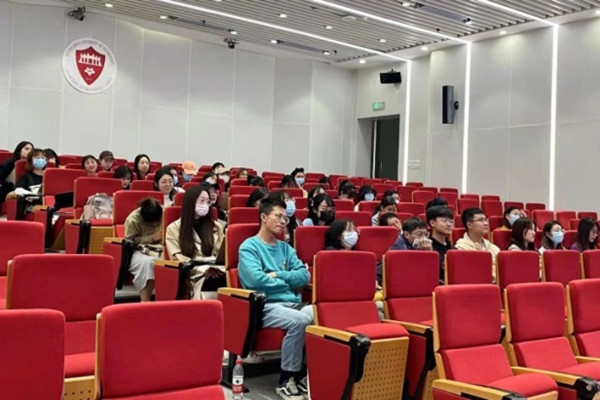On November 16, the School of Journalism and Communication specially invited Professor Yin Yungong, Dean of the School of Journalism and Communication of Hunan Normal University, to give an online academic lecture entitled A Brief History of Media Development in the Chinese Scene for teachers and students of the school. The 2021-level postgraduate students of the college listened to the lecture in the D1-b110 lecture hall of the Guangzhou International Campus. Professor Su Hongyuan, the dean of the college, and some teacher representatives attended the lecture online.

At the beginning of the lecture, Professor Yin pointed out that information dissemination and dissemination is an instinct and genetic gene of all living things. Whether it is animals or plants, information can be disseminated and disseminated in different forms. Information production and dissemination is a process of continuous civilianization and popularization. In ancient times, the right of information dissemination was monopolized by the ruling class, but with the changes of the times and the development of technology, the right of information production and dissemination has gradually become popular and generalized. He elaborated on slips and information dissemination, paper and information dissemination, and printing and information dissemination.

Professor Yin believes that the invention of bamboo slips has an important role in promoting the popularization of information dissemination, allowing human beings to have a systematic carrier for historical record, review and care. However, due to its inherent material limitations, the content preserved so far is still relatively rare. He also focused on the sealing issue of slips. The seal of the bamboo slips are connected with ropes. The ends of the ropes are knotted, and the knotted ropes are sealed with sealing mud. The sealing mud is stamped with official and private seals, which protects documents.
Professor Yin also explained the contents of paper and information dissemination, printing and information dissemination. The invention of paper has an important impact on the evolution of fonts, improving the carrier conditions for the refined development of font strokes, and making information dissemination more convenient. The popularization of printing makes it possible to copy information in batches, which plays an important role in the transformation of the process of human information dissemination.

At the end of the lecture, Dean Su Hongyuan of the college made a summary of the lecture. The students expressed their sincere thanks to Professor Yin for his wonderful sharing with warm applause, and had a lively discussion on the content of the lecture. After listening to Professor Yin's lecture, I learned about the historical context of the development of ancient Chinese media. Only through the ancients can we understand the present. Studying the development history of ancient media is of great significance to the study of the current digital media era. I used to think that the research on the history of media development was a very boring field. Through Professor Yin's narration, I deeply felt the fun in it.





